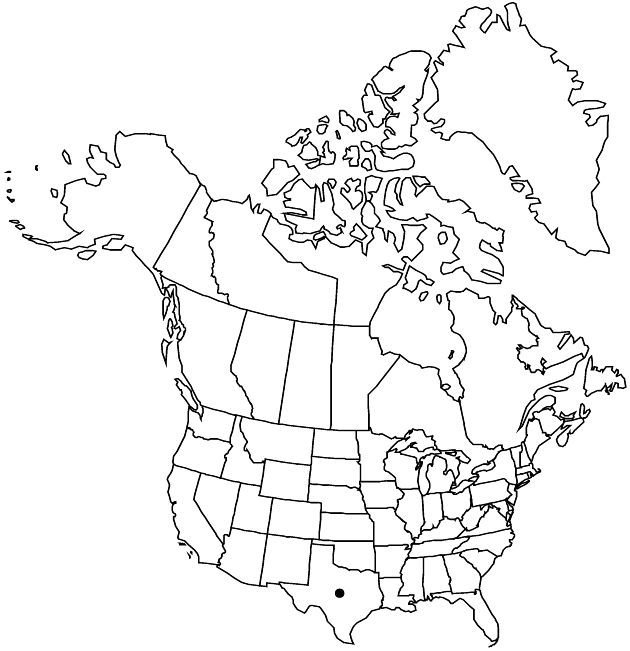Perityle fosteri
Madroño 30: 217, fig. 1. 1983.
Common names: Foster’s rock daisy
EndemicConservation concern
Revision as of 22:48, 29 July 2020 by imported>Volume Importer
Plants 6–15 cm (forming mats on rock faces, profusely branched, leafy); short-hairy. Leaves: petioles 4–8 mm; blades ± ovate to deltate overall, 5–12 × 5–12 mm, 3-lobed, ultimate margins entire. Heads borne singly or in corymbiform arrays, 6–7 × ca. 4 mm. Peduncles 2–5 mm. Involucres funnelform-cylindric. Phyllaries ca. 8, linear-lanceolate, 5–6 × 0.8–1.3 mm. Disc-florets ca. 10; corollas cream to pale-yellow, tubes 1 mm, throats tubular-funnelform, 3 mm, lobes 0.5 mm. Cypselae 1.5–1.6 mm; pappi of ca. 20 bristles 1–2 mm. 2n = 34.
Phenology: Flowering spring–fall.
Habitat: Rock faces in protected canyons
Elevation: 1500–1660 m
Discussion
Of conservation concern.
Perityle fosteri, possibly a close relative of P. rupestris, is known only from Culberson County.
Selected References
None.
Lower Taxa
None.
... more about "Perityle fosteri"
introrse +
connate +
herbaceous +
scarious +
absent +
hirsute +
papillate +
corymbiform +
continuous +
decurrent +
3-lobed;less ovate;deltate +
winged;ribbed;winged;ribbed +
1;15 +
stigmatic +
barbellulate +
unequal +
absent +
Foster’s rock daisy +
zygomorphic +
callous +
monomorphic +
dimorphic +
1.5mm;1.6mm +
staminate +
Tex. +
straight +
distinct +
proximal +
1;5 +
bisexual +
dispersed +
cylindric +
equaling +
singly +
indeterminate +
4 cm40 mm <br />0.04 m <br /> (?) +
surrounding +
funnelform-cylindric +
cauline +
deltate +
? (?) +
calloused +
2-carpellate +
inferior +
attached +
anatropous +
persistent +
falling +
absent +
vestigial +
tough +
thick +
absent +
connate +
persistent +
distinct +
falling +
unequal +
Madroño +
1983 +
pistillate +
absent +
fertile +
epaleate +
pitted +
convex;flat +
fibrous +
hyaline +
callous +
exalbuminous +
modifed +
alternate +
2-branched +
papillate +
Perityle fosteri +
Perityle sect. Pappothrix +
species +
tubular-funnelform +
3 cm30 mm <br />0.03 m <br /> (?) +
equal +
shorter +
1 cm10 mm <br />0.01 m <br /> (?) +
perennial +
short-hairy +
